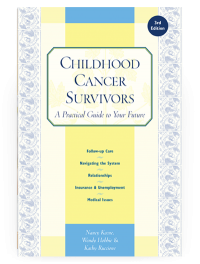Childhood Cancer Survivors
Breasts
Breasts arise from the epidermis during development in the womb. At birth, male and female breasts appear identical. During puberty, the female nipples, areolas, and breasts enlarge. The major part of female breasts is composed of mammary glands, which secrete milk after a child is born.
Organ damage
Radiation to a female’s developing breast can affect its growth because the breast bud is very sensitive to radiation. A total dose of 1000 cGy can cause decreased breast development in the radiated area (called hypoplasia), and doses higher than 2000 cGy can stop all breast growth. 1 , 2
If you had radiation only on one side (e.g., flank radiation that included the breast tissue) before puberty, the irradiated breast may not grow as large as the non-irradiated breast.
Young women who had radiation to the center of the chest for Hodgkin lymphoma or non-Hodgkin lymphoma may notice underdevelopment of the breasts on the parts closest to the center of the chest. This can give the illusion of breasts that seem especially far apart.
I was 16 when I had high-dose mantle radiation. That was the end of my youthful body. I had large breasts and after the radiation they never really regained their shape. They just flopped and have stayed that way ever since.
When the developing breast is irradiated, it increases the risk of breast cancer. All survivors whose breasts were irradiated need lifelong surveillance for breast cancer (see Chapter 19 , for more information). 3 , 4
The scientific literature does not contain much information about breastfeeding after radiation for childhood cancer. More information will become known as more survivors grow up and have children. Survivors of breast cancer sometimes have problems breastfeeding from the irradiated breast. If only one breast was irradiated, women are usually able to breastfeed normally from the other breast.
I was unable to nurse my second child, who was born 4 years after my treatment. I was told the milk glands were not working because of the radiation, like the sweat glands and the salivary glands.
I had mantle radiation to treat my Hodgkin’s disease: 4000 rads to AP-PA (anteroposterior-posteroanterior) upper mantle, 400 rad boost to superior mediastinum, 4000 rads to para-aortic nodes. In addition, when the staging surgery was performed, one of my ovaries was moved to protect it from radiation in case I needed radiation to the abdomen. Fortunately, I didn’t, and I have experienced relatively few significant side effects from treatment. I became pregnant 7 years after I was treated and I had no problems breastfeeding our daughter. Tammy is a healthy, happy almost-15-year-old.
Medical management
Your healthcare provider should carefully examine your breasts at each follow-up appointment if you had radiation to the chest area (mantle radiation for Hodgkin lymphoma, chest radiation for non-Hodgkin lymphoma, or total body irradiation prior to transplantation). You may need more frequent appointments during puberty.
Performing a monthly breast self-exam is one way to take care of yourself. This is especially important if your breasts were in the radiation field. Your healthcare provider should show you how to do a breast self-exam, as watching a videotape is usually not enough. You should do self-exams starting when you are a teenager and then every month for the rest of your life.
I think all follow-up clinics should have those synthetic breasts with lumps that survivors can feel to practice self-examination and to learn what lumps feel like. I was at a health fair and felt one of those things. Later, when I found my breast cancer during a self-exam, the lump felt exactly like that display breast. I think if survivors know what it feels like, they will be more likely to examine themselves and feel more comfortable speaking up.
Survivors at increased risk for breast cancer need to have their first (baseline) mammogram done 8 years after treatment or by age 25, whichever comes last. So, if you had mantle radiation at age 15, your first mammogram should be done at age 25. If you had mantle radiation when you were 19, you should have your first mammogram at age 27. Follow-up mammograms are done on a schedule determined by your risk. Many healthcare providers suggest mammograms every other year until age 40, then yearly.
If you have breast hypoplasia or breasts that did not develop, you may choose to use prostheses like the ones worn by women who have had breast removal surgery. Some survivors choose to leave their breasts as they are, and others have their breasts surgically enlarged. This surgery should be done by surgeons who are experienced and familiar with operating on irradiated tissue.
My daughter had one of the first transplants for AML (acute myelogenous leukemia) many years ago. I don’t know how much radiation she got, but it was enough to stop all breast development. She had breast augmentation surgery while in high school. She was pleased with the results except that she gets keloid scars easily and those are pretty unsightly.
Table of Contents
All Guides- 1. Survivorship
- 2. Emotions
- 3. Relationships
- 4. Navigating the System
- 5. Staying Healthy
- 6. Diseases
- 7. Fatigue
- 8. Brain and Nerves
- 9. Hormone-Producing Glands
- 10. Eyes and Ears
- 11. Head and Neck
- 12. Heart and Blood Vessels
- 13. Lungs
- 14. Kidneys, Bladder, and Genitals
- 15. Liver, Stomach, and Intestines
- 16. Immune System
- 17. Muscles and Bones
- 18. Skin, Breasts, and Hair
- 19. Second Cancers
- 20. Homage
- Appendix A. Survivor Sketches
- Appendix B. Resources
- Appendix C. References
- Appendix D. About the Authors
- Appendix E. Childhood Cancer Guides (TM)

